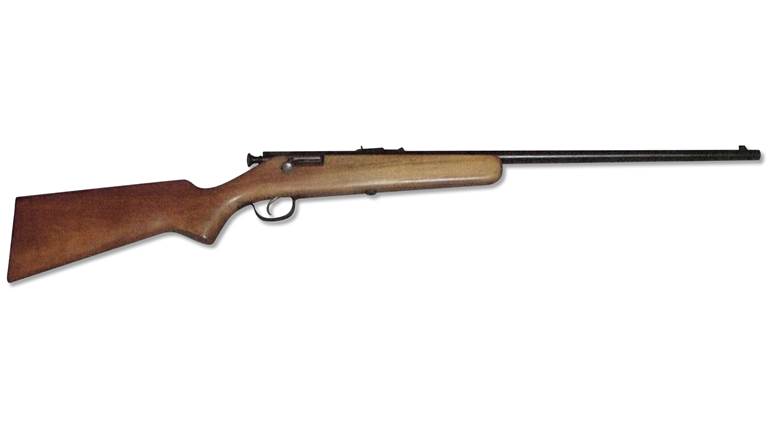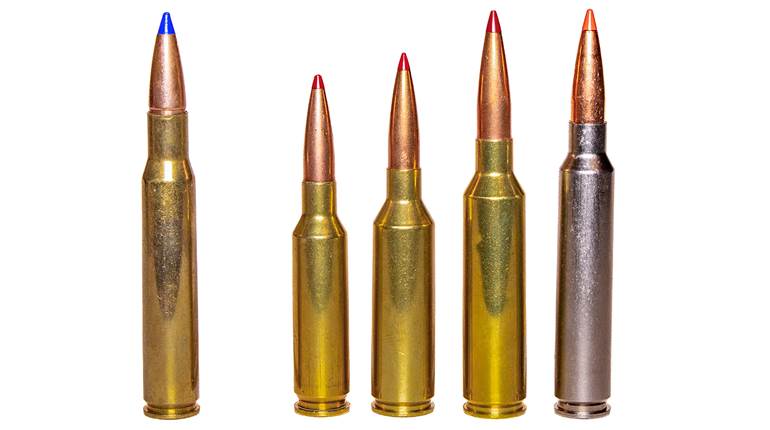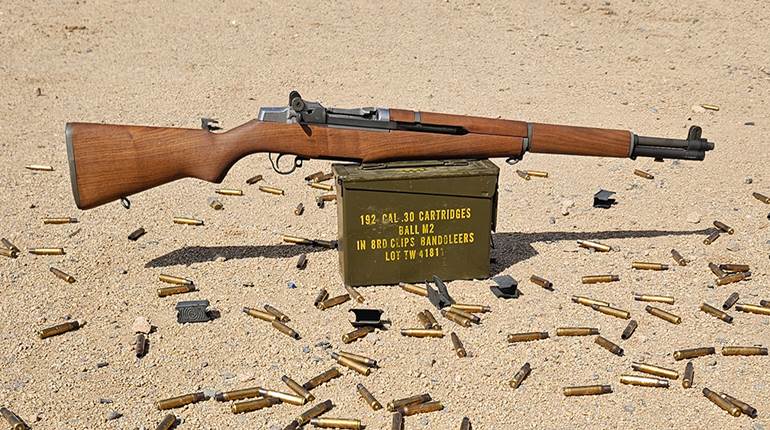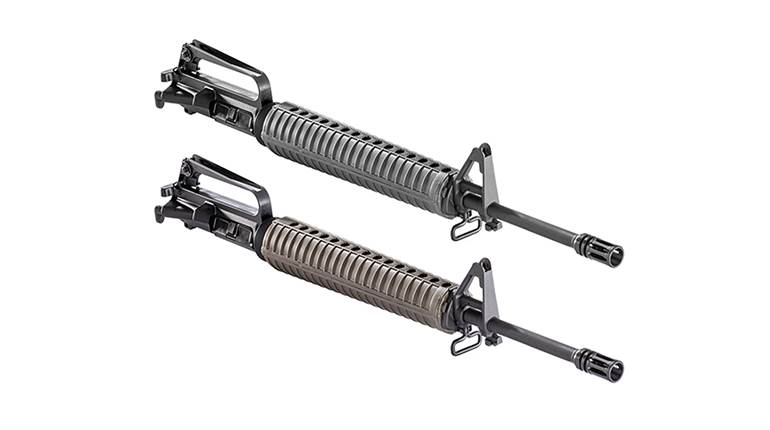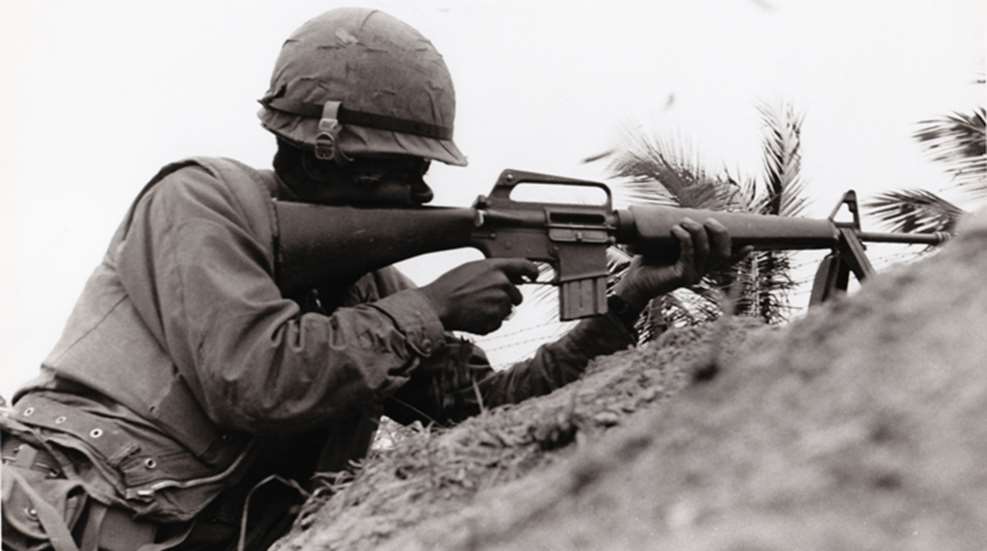
On Jan. 30, 1968, forces of the Viet Cong and the North Vietnamese People’s Army launched a series of attacks throughout South Vietnam. The well-coordinated offensive coincided with the Tết holiday, the Vietnamese celebration of the New Year. [W]e remember the Vietnam battles of early 1968 as the “Tet Offensive,” an event that many have described as a turning point in America’s involvement in Vietnam. 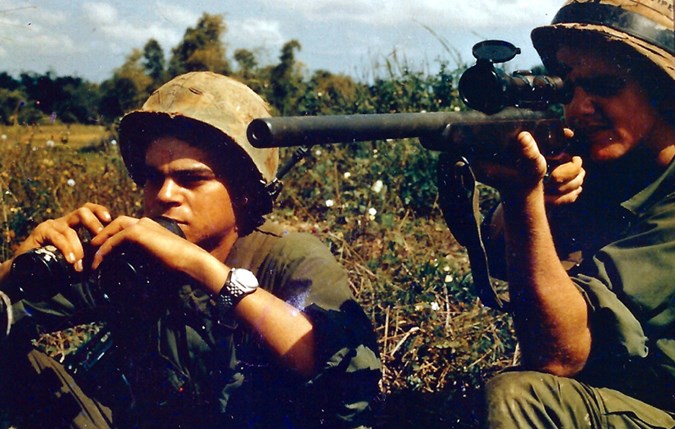
Sniper team of the 5th Marine Regiment at work during January 1968. The Winchester Model 70 rifle proved highly effective in the hands of USMC marksmen.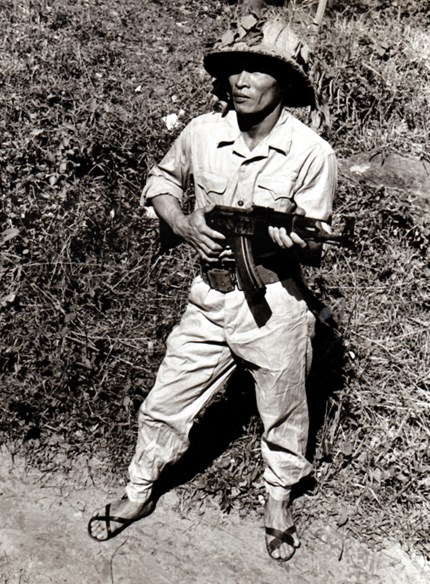
The 1st Marine Division set up this identification photo of a typical Viet Cong guerilla armed with a Chinese Type 56 rifle (copy of the Soviet AK-47). Simple and reliable, the AK-47 and its many variants have proven to be a perfect weapon for insurgents.
During the offensive, a force of more than 80,000 Viet Cong guerillas and NVA regulars attacked more than a hundred communities throughout South Vietnam, including 36 of the 44 provincial capitals. Saigon, the southern capital, was heavily hit. 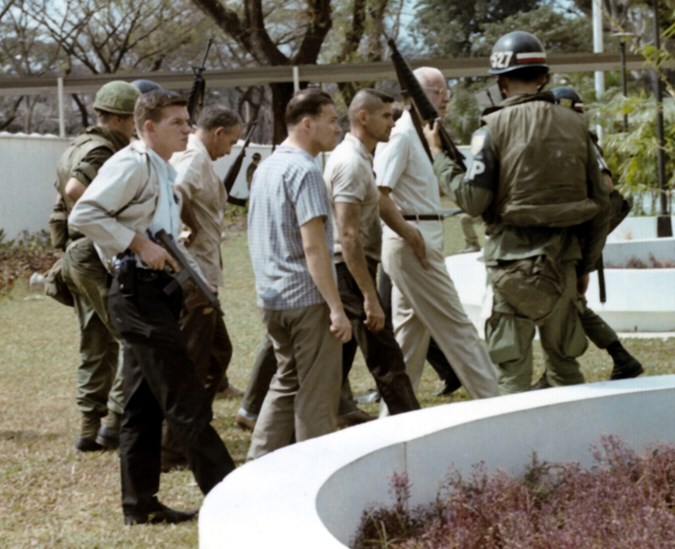
The Berretta M12 9 mm SMG fired its first shots in anger during the defense of the U.S. Embassy in Saigon during the opening stages of the Tet offensive. This photo shows men of the U.S. ambassador’s security detail, in the days following the initial VC attacks. M16 rifles and an M1 Carbine can be seen in the background.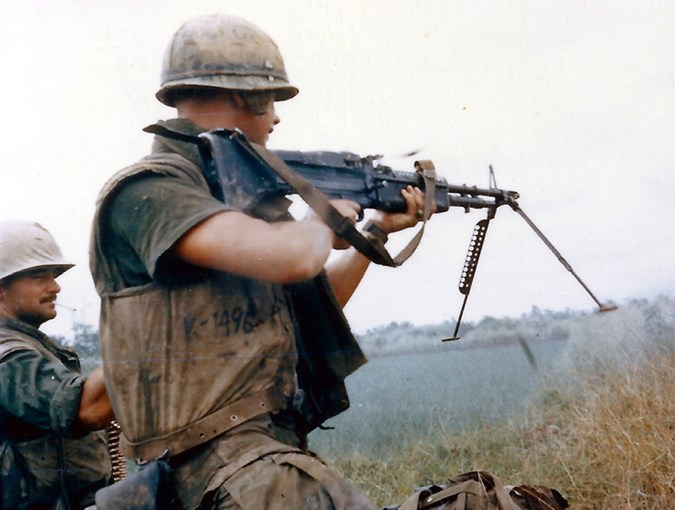
A Marine cuts loose with the 23-lb. M60 machine gun while his assistant keeps the disintegrating link ammo belt loading smoothly.
The initial attacks included an assault on the U.S. Embassy in Saigon by 20 Viet Cong sappers, which killed five American troops and prompted significant coverage by American news reporters—far out of proportion with the actual importance of the embassy battle. The entire VC assault force was annihilated on the embassy grounds within a few hours. Many news reports remained focused on the attack on the building symbolizing America’s presence in South Vietnam.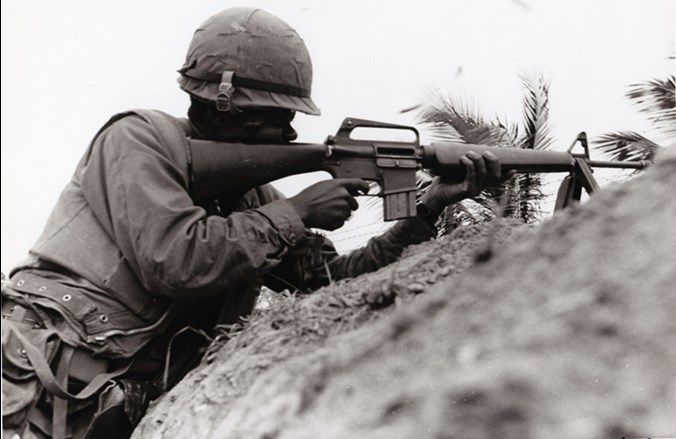
The M16 was still relatively new to the Marine Corps at the beginning of 1968. This Leatherneck uses his with a bipod during the battle for Hue in February 1968.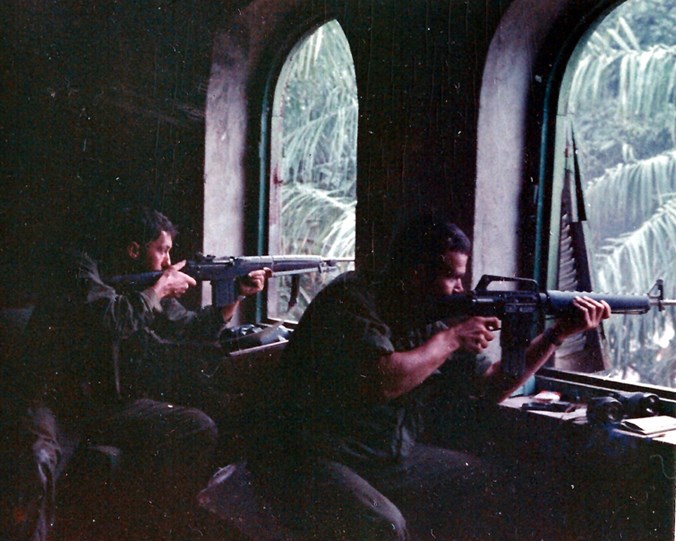
Brothers in Arms: Marines equipped with M14 and M16 rifles engage Viet Cong snipers during the battle for Hue, Feb. 1968.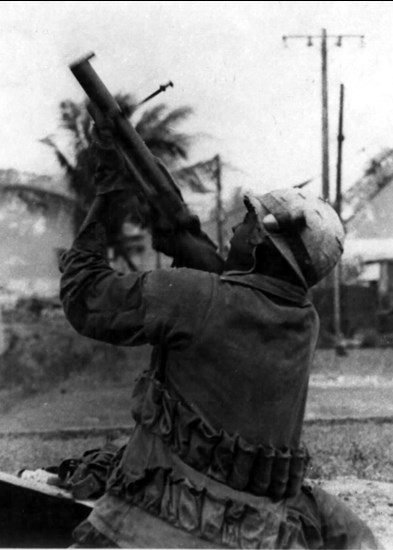
The M79 40 mm Grenade launcher, sometimes called “Thumper” by U.S. troops. Seen here as used by a grenadier of the 1st Marine Division in the battle for Hue, March 1968.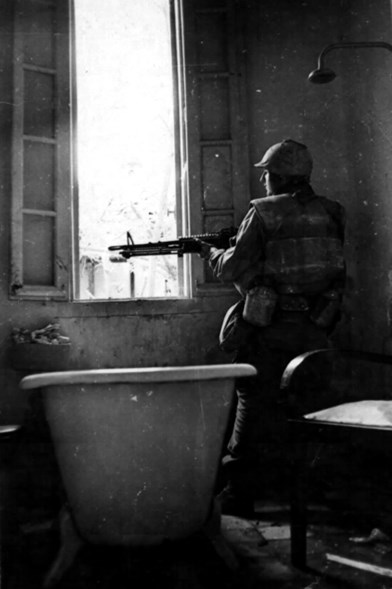
A Marine M60 gunner during the house-to-house fighting in Hue City during February 1968.
Communist forces occupied much of the ancient city of Huế. Relatively close to the DMZ, Hue was strangely unprepared for the assault. Four U.S. Army battalions, three weakened USMC battalions, and eleven ARVN battalions fought hard for more than a month to drive the enemy out. In the end, Huế was almost completely destroyed, and thousands of its residents were massacred in brutal reprisals by the communists. The troops from the North showed their true selves at Huế.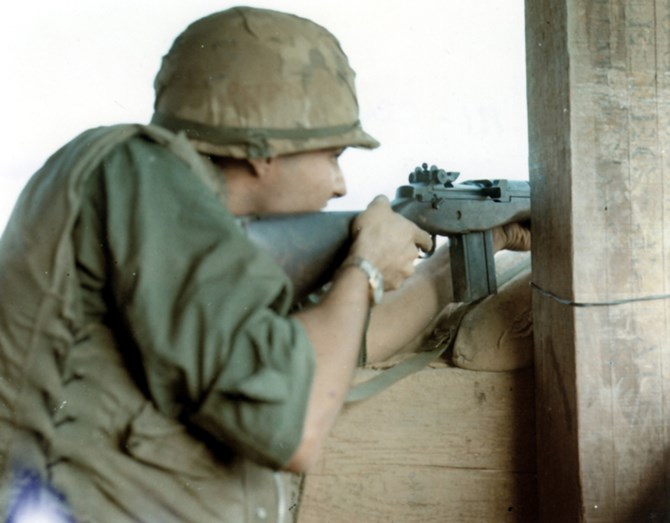
A G.I. of the 12th Aviation Battalion engages the enemy with his M14 rifle at Long Binh, Feb. 1, 1968. In early 1968, the M14 could be found in certain Army units and was still common in the Marine Corps.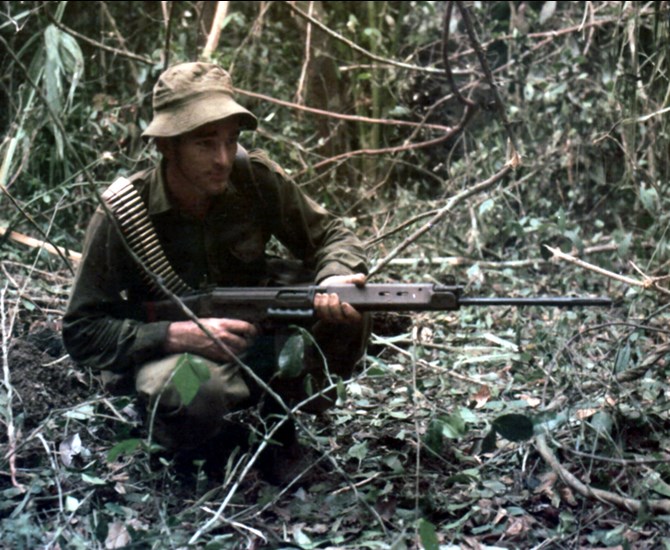
A soldier of the Royal Australian Regiment, equipped with a semi-automatic L1A1 rifle (chambered in 7.62x51 mm NATO) at Bien Hoa during February 1968. The L1A1 “SLR” was standard equipment for the Australian infantryman in Vietnam, and well-liked for its reliability and stopping-power.
Throughout South Vietnam, the fighting was intense from January to June of 1968. At the U.S. combat base at Khe Sahn, in northwestern Quảng Trị Province, two regiments of Marines were surrounded and besieged by three divisions of the North Vietnamese Army. From Jan. 21 until April 6, the Marines held out against relentless NVA attacks. Continuous air strikes and more than 150,000 artillery rounds helped keep the attackers at bay, but ultimately it was the Leathernecks’ resolve that kept Khe Sahn in American hands.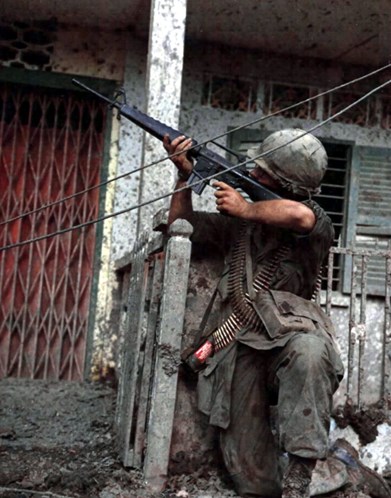
Tet Phase II: A G.I. of the 9th Infantry Division targets VC snipers in the outskirts of Saigon during the second round of attacks in May 1968. The rifleman carries extra ammo belts for his squad’s M60 machine gun.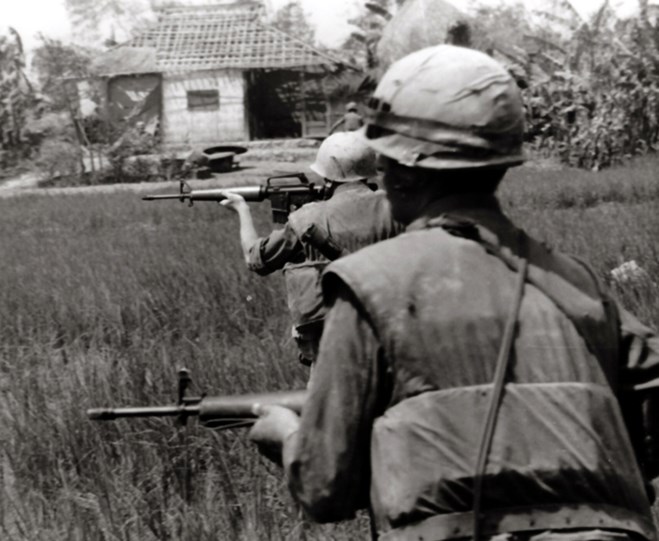
Marines suppress VC positions during Operation Napoleon Saline during early March 1968.
Despite the initial surprise and limited gains, Tet proved to be a tactical disaster for communist forces, who suffered more than 100,000 casualties through all three phases of the offensive. The Viet Cong were essentially eliminated as a fighting force, and no popular uprising was generated in South Vietnam. The NVA suffered heavily and its aggressiveness was blunted as their leaders realized they lacked the resources to sustain such attacks in the face of American firepower.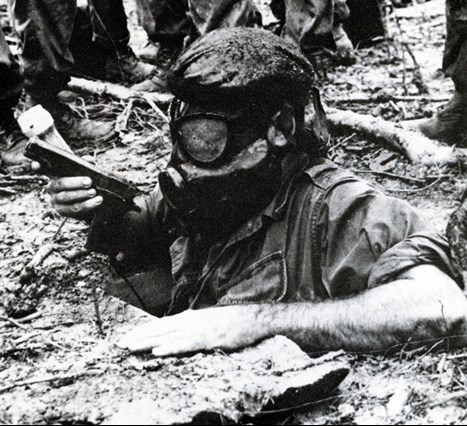
A “tunnel rat” descends into a Viet Cong tunnel. Some tunnel experts considered the powerful .45-cal. M1911 to be “too much gun” in the tight confines in the battle below ground.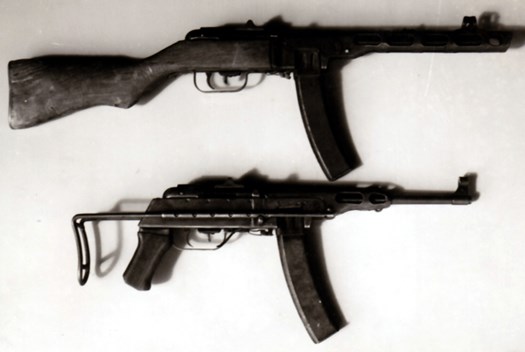
The Chinese Type 50, a copy of the Soviet PPSh-41 submachine gun, chambered in 7.62×25 mm Tokarev. Its cyclic rate is high, normally in excess of 1,000 rpm. The Type 50 only accepts 35-round box magazines. Bottom: K-50M, a North Vietnamese design that shortened and lightened the PPSh-41/Type 50 design, adding a pistol grip and a retractable wire stock. Some of these SMGs were still in service with the Viet Cong during the Tet offensive.
Despite these battlefield setbacks, Tet became an important strategic victory for North Vietnam. At home, America’s commitment to Vietnam began to wane. Politicians waffled. Anti-war protests grew larger, and the news media regularly stoked the fires of discontent. 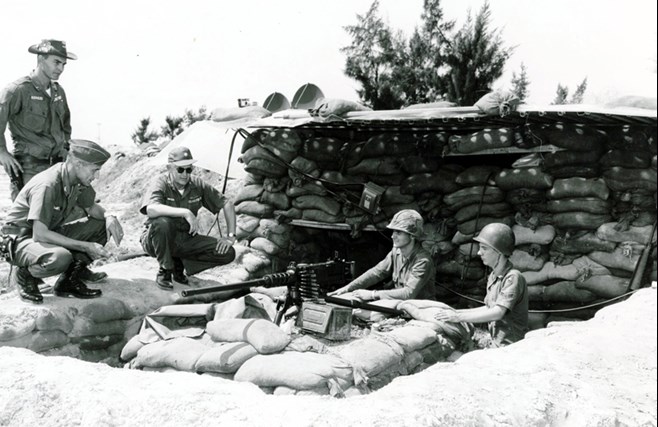
Defensive fire: Air Force security troops manning a Browning .50 cal. M2 machine gun, set up for airbase defense.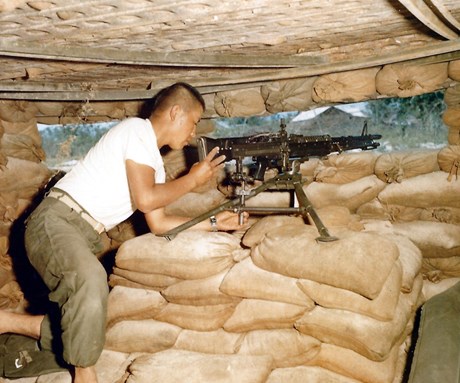
A Marine adjusts his M60 “Pig” mounted on a M122 tripod inside a sandbag bunker.
On Feb. 27, 1968, CBS Anchorman Walter Cronkite broadcasted the following in a special report on Vietnam: “To say that we are closer to victory today is to believe, in the face of the evidence, the optimists who have been wrong in the past. To suggest we are on the edge of defeat is to yield to unreasonable pessimism. To say that we are mired in stalemate seems the only realistic, yet unsatisfactory, conclusion.”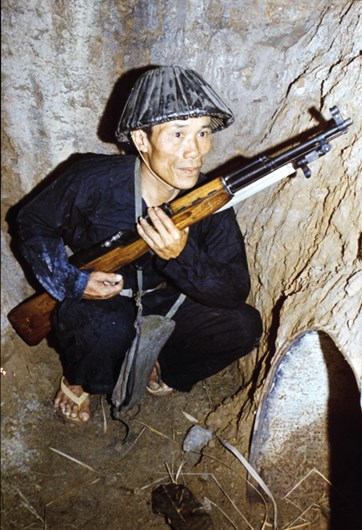
Uncle Ho: Viet Cong guerilla posing with an SKS carbine (or the Chinese Type 56 semi-automatic carbine copy). The SKS provided another excellent rifle for VC and NVA troops.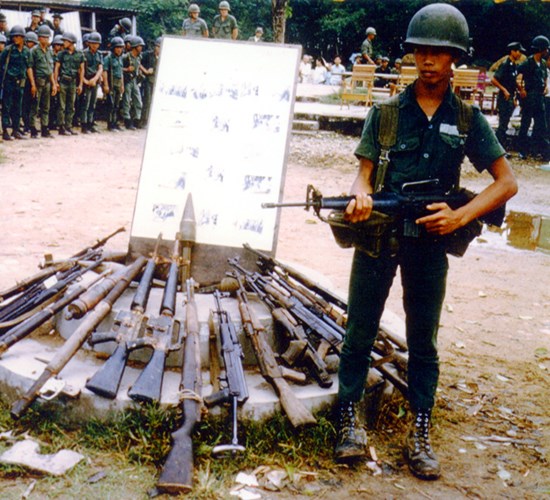
An ARVN trooper guards a typical VC weapons cache—featuring various AK-47s, M16 rifles, the venerable M1 Garand, and even an antique black-powder cannon.
After Tet, President Johnson watched his approval rating fall from 63 to 47 percent. Americans grew distrustful of the Pentagon’s Vietnam reports and criticism of U.S. military leaders created a much-discussed “credibility gap.”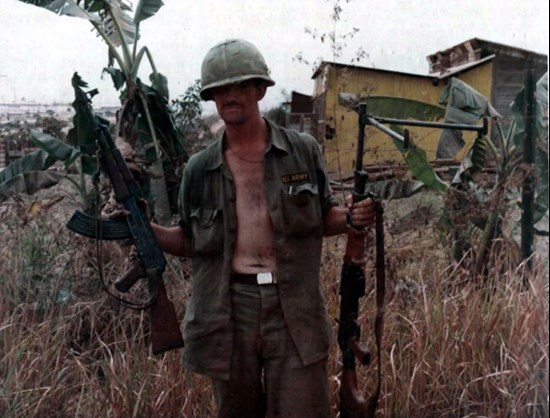
A G.I. of the 9th Infantry Division shows off captured VC weapons early in the Tet offensive at Long Binh. In his right hand is the AK-47, and in his left the RPD squad automatic with its distinctive “club foot” stock. The RPD was the standard light machine gun of most VC units. Chambered in 7.62x39 mm, it fires full-auto only (at about 750 rounds per minute) using a non-disintegrating 100-round belt in a drum container.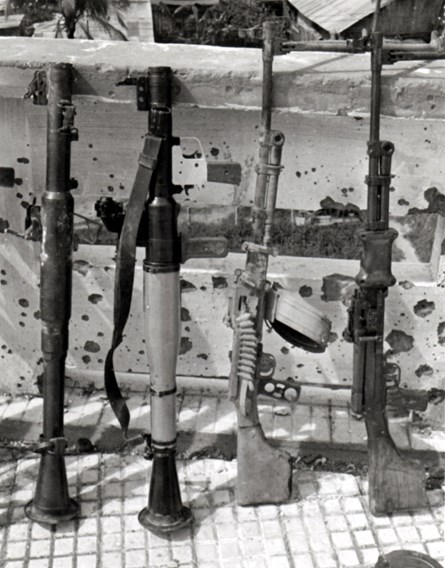
Captured VC support weapons: (left) the RPG-7, and (right) the RPD light machine gun. The RPG gave VC units an easily portable rocket launcher that provided potent anti-tank capability and also handy “artillery piece” for use against buildings and fortified positions.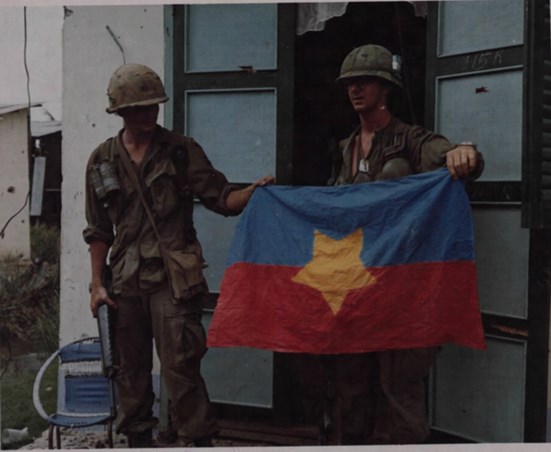
Tet Phase II: G.I.s of the 9th Infantry Division display a Viet Cong flag captured in the Saigon suburbs as Tet’s bloody second phase ends in late May 1968.
None of this did anything to help American troops in Vietnam who, regardless of inaccurate news reports and flinching politicians, never failed to overcome the enemy on, over and below his own turf. Advanced American firepower, coupled with traditional G.I. ingenuity and courage held the line during the Tet Offensive, and turned back the largest communist attack of that long and bitter war.












